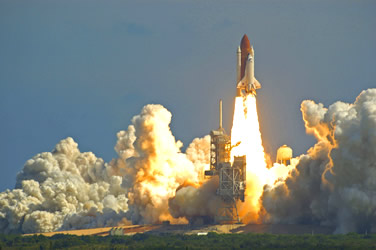
Introduction
The immense contribution that science makes to our lives is indisputable. Whichever way we look we can see evidence of its power. From the simple battery and light bulb to the vast ocean liners traversing the sea and the incredible, gravity defying, sculpted pieces of metal, flying through the skies. So many of science’s feats are staggering to such an extent that many of us would now struggle to live our lives without them. But have these technological advancements also contributed to distancing us from ourselves? Have we become so dependent on the external comforts and benefits of science that the invisible landscape of the self has not been (and is still not being) fully appreciated and explored?
Our hypothesis is that that position has not altered. In fact as more discoveries and realisations have emerged that arrogance has expanded to such an extent that in some cultures in some parts of the world, particularly the developed world, science has become the new God of our time. We’ve arrived at a point in history where we’re now saying unless it can be scientifically proven it does not exist or at best we should doubt its existence. Is science the only measure of reality?
In fact, is it a measure we can trust? Science’s own journey to the present point is one of varying points of view being overthrown by new, different hypotheses and discoveries. History is littered with such examples, as we will go on to demonstrate in this brief synopsis. We are not suggesting that science doesn’t have a place in the modern world. We believe it certainly does but the key word here is ‘place’. For us science is a significant contributor to the understanding of the human condition. It is not the ultimate arbiter, the final judge and jury. This we believe is the mistake that has been made and continues to be made. Spiritual or religious perspectives have been largely demoted over the last 400 years in terms of their relevance and importance in our lives. Is this seemingly lop-sided view of the world one we should trust? Let us explore.
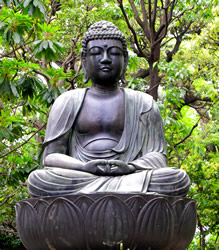
The Eastern Influence
It’s important from the point of balance and perspective to state that the story as far as the Eastern world is concerned is a different one. There has not been the same dethroning of faith in the name of science. There has been and continues to be a far better co-existence. We will look at that story at another time so that the great commentators and contributors of the East are not lost in the telling of a largely Eurocentric version of history because, albeit in different ways, eastern science and philosophy have played no lesser a part in human evolution. Great minds such as Patanjali, Lao Chi Tzu, Confucius, Buddha just to name a few, are giants on the human stage and what will become clear in the telling of this tale is that where we stand today is heavily dependent on mathematics: this simply wouldn’t have happened had it not been for the contributions of the ancient Indian and Arab cultures. Modern mathematics as we know it was founded on the system they established. But for now our preoccupation is with the evolution of science vis-à-vis faith and religion in a largely western context.
The Birth of Science?
It’s difficult to plot the exact moment of the conception of science. There remains some dispute over whether it has always been with us in some social and cultural way and therefore has only latterly been defined as science or whether we can point to a moment in time when science became probably our most important reference point for how we perceive ourselves and the world. There is however sufficient consensus that if there were a moment of birth then it was 400 years ago, in 1609 when Galileo (1564-1642) looked at the moon through a telescope, thereby changing our understanding of the universe forever.
This event was considered such a moment of significance for the world that some have compared it to the birth of Christ because it was that moment when the impossible entered human affairs. As we’ve already stated, a point of conception does remain contentious and yet that particular moment was to change the outlook and evolution of the world as we know it.
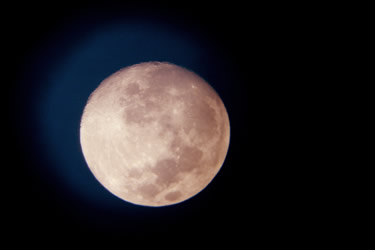
From Aristotle to Aquinas
The revelations that have followed since Galileo have slowly served to evict God and religion from our understanding of the solar system in which we live. If we look at what existed before Galileo, from the time of Aristotle through to St Thomas Aquinas, we can see that science in that period (which might be described as medieval science) was not divorced from God and religion. There was clearly some accommodation of both material and spiritual aspects. Aristotle was born in 384 BC. He was and remains the very emblem of human wisdom. His style was dispassionate, cool and analytical and his intelligence universal. He brought together physics and cosmology, which became the basis of medieval thought. Although his contribution may in the current light seem strange and even poetic it was based on an extraordinary imagination and on ‘the science of the day’. Such was Aristotle’s contribution that in the 13th century, Aquinas and the scholastic theologians of the time tried to integrate Aristotelian thought with the triumph of Christianity. St. Thomas Aquinas was concerned with integration and his unfinished work ‘Summa Theologica’ was an attempt to bring all theories together. It represents the pinnacle of intellectual Christianity. It defined and endorsed Aristotle and established the primary synthesis of the medieval mind by uniting his thought (Aristotle’s) with the revelation of Christianity. This was his attempt to put the whole of creation and history into a simple intellectual structure that unified the opposing strands of consciousness that were in danger of challenging the understanding of the day.
It is of course impossible to summarise history entirely in one or two paragraphs, for not only would so much of the relevant detail be lost but many amazing minds and contributors to the story of human kind would not be properly accounted for. Nevertheless, there is immense value in looking at the ‘spine’ of events that have brought us to this point in time. If we look at what has underpinned so much of our thinking for over the last 2000 years Aristotle’s contribution of classical thought has a significant place in the evolution of human kind. Ptolemy, the great astronomer and physicist around AD 150, was amongst the first to suggest that the earth was spherical (although it’s not entirely clear whether it was Pythagoras or Aristotle that first proposed this notion). What is clear is that Eratosthenes (the Greek mathematician, astronomer and poet) was the first to accurately measure the diameter of the earth (240 BC). This was a long time before, in 1492, Christopher Columbus courageously tested the hypothesis that the earth was indeed ‘round’ and as a consequence discovered America.
Ptolemy’s contribution cannot be understated as many of his calculations have proven to be spectacularly accurate. For example, he calculated the distance of the moon from the earth to be 29.5 times the earth’s diameter. The current calculation with all our sophisticated instruments is 30.2! The journey of classical thought continued but Christian intellectualism, obviously influenced by Christ and his teachings, increasingly dominated the evolution of thought within Europe and the European colonies. Then came the invaluable contributions of St Thomas Aquinas. He was the first to integrate Aristotle’s classical philosphy with the Christian intellectualism of the time. The name given to his line of reasoning was Thomism, named after him. He realised that there could be a co-existence of physics and metaphysics and for a time his great work the Summa (considered as a literary work only second in importance to the Bible) achieved that union.
Further Revelations
However the steady march of events that, in 1492, led to Columbus testing out Ptolemy’s (and others’) hypothesis kept the evolution of science looking for its rightful place in the consciousness of man. Columbus’ discovery was to eventually threaten the prevailing orthodoxy of the time as Europe was shaken by this undiscovered wilderness. The new continent (America) had to be incorporated into the existing world-view: it created a turbulence such that it begged the question ‘if an immense continent could lie beyond our immediate perception and knowledge, what else might be lying undiscovered?’ The limits of the known world had now been smashed. The revelation of America introduced the possibility of substantial ignorance into the human mind as it exposed the incompleteness of all previous models of the world.
The refined, subtle, wonderfully complex systems of Aristotle, Ptolemy and Aquinas were now found to be incomplete – the revelations that now came with Columbus suggested we might scarcely know anything at all. It is probably at this moment that the systems of antiquity were first wrestled to the ground and that doubt replaced certainty.

The Copernican system replaced geostasis (the notion of a stationary earth) with heliostasis, a stationary sun and geocentrism (a central earth) with heliocentrism (a central sun). The system he thus created had a clarity which surpassed anything that had gone before. Copernicus was able to compute distances and time that had previously seemed far beyond the reach of human knowledge, far beyond even the reach of Ptolemy. For the sake of balance and accuracy it needs to be said that Johannes Kepler, a contemporary of Copernicus, eventually got the system devised by Copernicus, to work fully. The Copernicus model was about to depose the old Gods of classical romantic thought represented by Aristotle as well as the integrationism of Aquinas. And what was to follow would be taken even further by the genius of Galileo and Isaac Newton.
Even the protestant radicals leading the charge for reformation felt threatened by Copernicus’ model and described him as ‘an upstart astrologer’. His model turned the whole Christian drama, as previously understood, on its head. Up to this point the Aristotelian thought posited that we (humans) were the purpose, the point of it all, the rational axis on which the whole drama of life spun. Putting the sun at the centre and the earth merely amongst the other planets undermined all previous thought and the many philosophical perspectives that had been built around humankind’s ‘central significance’.
The Role of Mathematics – Science’s New Language
Another key part of this evolution and revolution that deserves recognition, as it was pivotal to events at the time, is the revitalisation of mathematics, science’s own language. The introduction of Arabic numerals into Europe upgraded what had gone before. This Arabic system in fact was originally derived from India, and then passed through the Arab world and on into Spain. The irony here is it was the Muslim occupation of southern Spain that led to the introduction of modern numerals into Europe. This included the invaluable innovation of the number zero, yet it was the Spanish monarchs Ferdinand and Isabella of Spain, the patrons of the new world (who had financed Columbus’ trip) who actually drove the Arabs out of Spain in 1492. So it was the Arab genius that had devised the primary language of science but the decline of their power and influence left them as second hand beneficiaries of the revolution that they had written the text for! Once numbers had taken on their modern form they became instruments of almost bewildering power. The combination of Scientia Nuova and mathematics as composed by the Arabs offered a magic never before seen.
The New Technologies
As well as maths, science also needed the age’s rapidly developing technological skills. There is a slight paradox here as technology is essentially an application of science; therefore one would expect it to come second. However the craftsmen of the Middle Ages and the Renaissance devised technologies that in fact, preceded and inspired the science we embrace today. Technology’s contribution began in the fourteenth century when the counterpoise clock was invented in Germany and from there, public timepieces rapidly spread throughout Europe, replacing the old systems of hourglasses and sundials. Subjective time, our own private sense of time, became subordinate to a more precise, objective measure. Our obedience to time was born..
Maps came later, in the sixteenth century. Just as clocks, they changed our perception and experience: maps got us thinking beyond the next hill or body of water. These two technologies like mathematics were to become co-stars in science’s ascent. Clocks fixed time and maps contained space and so the human understanding of and relationship with time and space began to change. The full impact of both wasn’t truly felt until the 20th century, as the benefits of clocks and maps began as the privilege of a wealthy elite. It wasn’t really until the industrial development that these two instruments became the foundation of every life. That foundation was laid in the 17th century and was heavily influenced by Isaac Newton’s contribution.
The Genius of Galileo
As astounding and life-changing as these two technologies were, nothing, at that time, matched the telescope’s impact on consciousness and society. Some debate surrounds the invention of the telescope as some claim its invention goes back to the middle ages; some say it was invented in Holland, others say Italy. However, although the moment and place of its conception remain unclear, there’s no doubt that it had little value until 1609, when it found its way into the hands of the genius of Galileo, the great astronomer and physicist. The reason this moment in time is so crucial and can be argued to be the moment of science’s birth, is because it was the point when many ‘things’ converged. The moment in time when all that had gone before could now be viewed and tested, in a way that had probably never been imagined. Scientia Nuova was now throwing down its first serious challenge to religion and faith which led to cries of blasphemy.
Galileo’s impact began before the telescope in 1604 when he proved that a new star had emerged in the heavens. This had previously been thought to be impossible according to the Aristotelian view of the cosmos: his model had described the heavens beyond the moon as superlunary (beyond the moon), perfect, absolute and never changing. Change only happened here and in the space between the earth and the moon (sublunary). This was first challenged in 1572 by Tycho Brahe, a Danish astronomer, who had identified a nova also beyond the moon; Galileo’s discovery compounded the flaw in the sublunary and superlunary premise of Aristotle. The telescope sealed Aristotle’s fate and indeed ours when Galileo saw the moon. He went on to calculate, with an accuracy endorsed by today’s measurements, the heights of the mountains on the moon. He discovered the moons of Jupiter and countless new stars. By observing a secondary illumination on the moon, he worked out the earth shined, like other planets. In fact, Galileo discovered what we now call the universe.
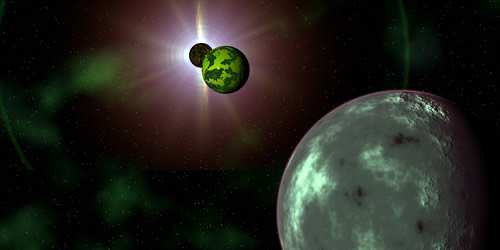
Initially these discoveries were greeted with excitement, as these were the liberal minded years of the late Renaissance and so there was a temporary lull in the defensive furore surrounding the old wisdom. This was demonstrated by Cardinal Maffeo Barberini writing a poem in praise of Galileo, the irony here is that when he became Pope it was he who ordered Galileo’s trial by the inquisition on charges of heresy!
It’s worth pointing out that the growing power struggle between ‘new science’ and orthodoxy was further complicated by the new humanism of the Renaissance which was also questioning the value of science. The poet Petrarch (1304-1374 – often referred to as the Father of Humanism) questioned at the time “even if all this knowledge being unearthed was true what value did it have in creating a happy life?”
This question echoes throughout the ages right up to the present time. When Albert Einstein’s wife was asked whether she understood the theory of relativity she replied: “Oh no, he has explained it to me many times, but it is not necessary for happiness”. Her comments echoed the melancholy of Petrarch. He saw science in its pessimistic and inhumane form and feared the journey it would take us on. Was he right?
But at the time in the liberal climate of Renaissance Catholicism, science was initially tolerated, indulged and at times even admired. The honeymoon did not last long! The Jesuit intellectuals in particular feared the consequences of Galileo’s discourses and what was to become his insistence that the sun was indeed “at the centre”, as stated by Copernicus. The real problem with Galileo was that he was not merely dabbling in stars and planets; he was also conducting experiments with gravity and kinetics, as well as speculating about the nature of matter. In fact, the first theory of relativity came from him and it was from his physics, rather than his astronomy that the most threatening challenges to authority emerged.
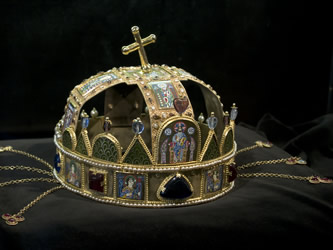
The Battle for the Crown
The religious battles were raging in the background between the Jesuits (the fiercest, purest and most zealous defenders of Christian orthodoxy) the Protestants and Catholics. Aquinas’ legacy was at the centre of the conflict during the period of the Reformation and Counter-reformation. It was during these disputes in the 16th century that theology, once Queen of the medieval sciences, was to relinquish her crown to physics, the new science. That crown has never been reclaimed.
The Jesuits increasingly felt they had to fight the liberal leanings of Pope Urban. This was the age of the Thirty Years War and protestant Swedish King Gustav Adolphus was rampaging southward through Europe. Pope Urban felt obliged to succumb to the Jesuit plots. Galileo was then put on trial, imprisoned and sentenced.
Four years after Galileo’s trial, René Descartes (1596-1650) the great mathematician, philosopher and scientist, published his ‘Discours de la Méthode’ in which the heliocentric solar system that Galileo spoke of was also supported. Thirty three years later in Cambridge Isaac Newton was grinding his own lenses, in order to better understand light. So religion may have won that battle (in its attempts to silence Galileo) but the war certainly wasn’t won.
What have we learnt so far? Firstly that faith, religion and spirituality have not remained static and that throughout history they have had their own tensions. On closer inspection we can also see the role different egos have had on the evolution of all knowledge. It is the ego that probably remains the biggest threat to our awakening. As this synopsis has unfolded it has become clear that the birth of science threatened all that had stood before and so a war not only existed between opposing religious perspectives, but a war began to rage between the great minds of the time and religious orthodoxy. Sadly this lead not only to the dismantling of what needed adapting and changing, but it also lead to an unnecessary overturning of so much of value too! The current duality of our world today bears testimony to that, as we would argue we move ever closer to a ‘soul-less’ existence. The fear that emerged from the church and state against the likes of Galileo (and there were many others that were imprisoned for their brilliance and beliefs) served to feed the revolution of science rather than halt it and so its march continued….
If you’re interested in exploring further what you’ve read here, then the book can be purchased at a very modest price from Amazon and other retail outlets. To find out more click here
